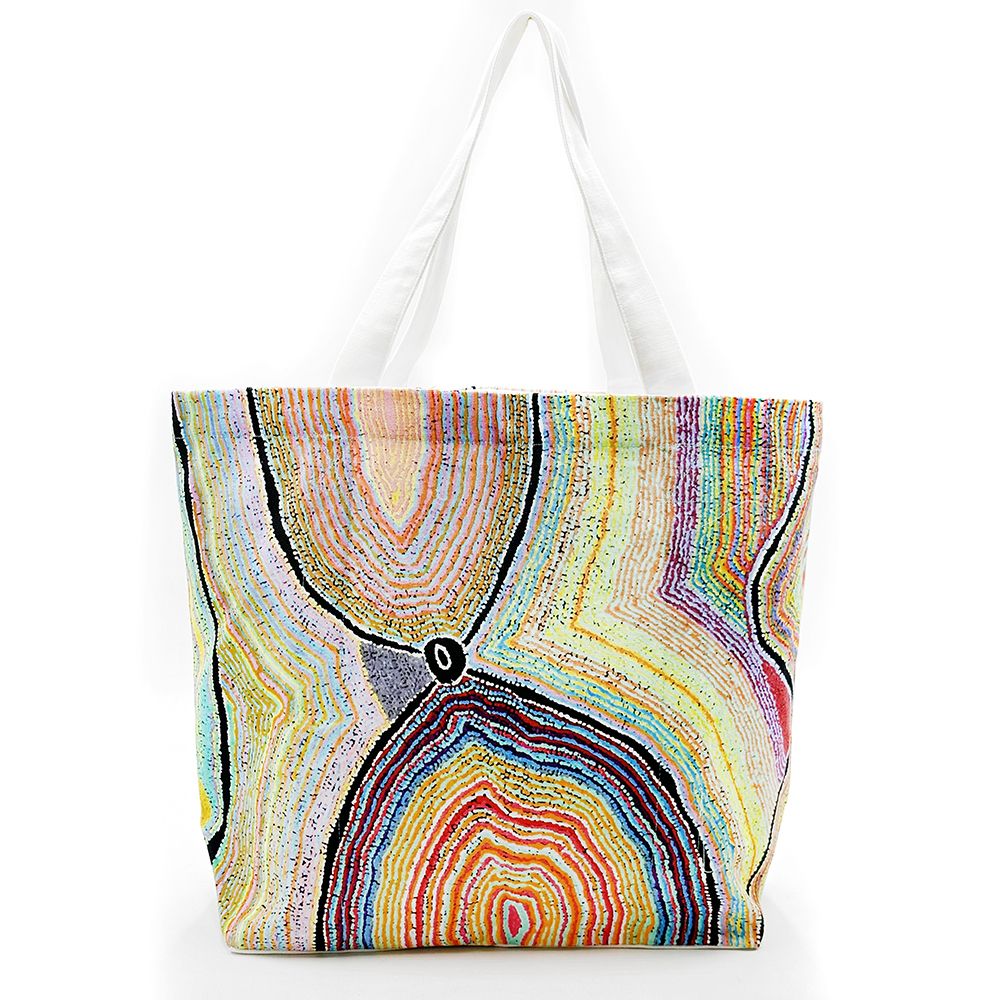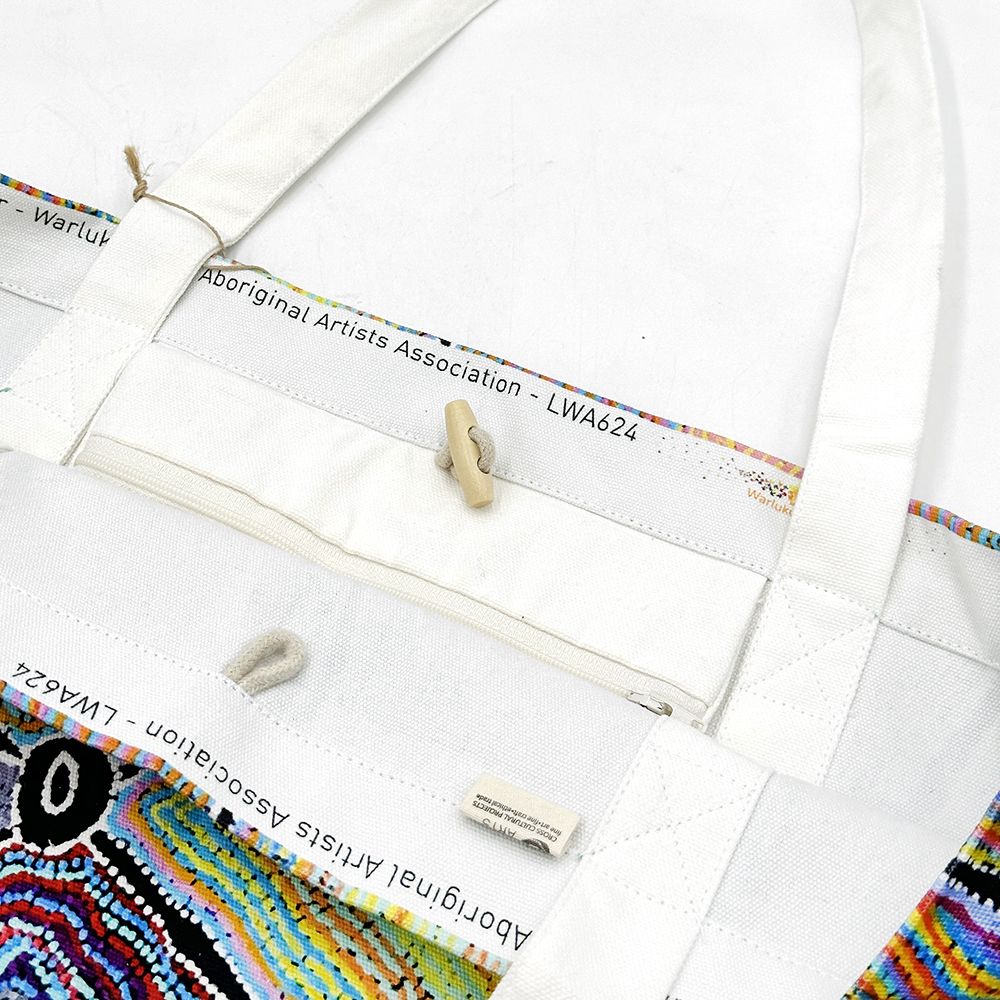Wakirlpirri Tote Bag
Wakirlpirri Tote Bag is backordered and will ship as soon as it is back in stock.
This large tote bag features artwork by Liddy Napanangka Walker, showcasing the significance of the Wakirlpirri tree, which grows alongside creek beds and near mulga trees. The Wakirlpirri is a versatile tree, with seeds that can be eaten both raw and cooked, and are used to create a sweet drink called yinjirrpi when dried. The tree's wood is also crafted into essential tools such as karli (boomerangs) and dancing boards used in traditional ceremonies. This bag captures the importance of this tree in Liddy's culture, blending beauty and practicality in a functional piece. Made from durable, ethically-sourced cotton, it offers both style and a meaningful connection to Indigenous Australian traditions, with the print displayed on both sides for a striking look.
Royalties directly benefit the artist.
Dimensions: 18.9" x 13.8" x 5.9"
Fair Trade | Ethically Produced | Machine Washable


About the Artist:
Liddy Napanangka Walker (c. 1925–2017) was a respected Warlpiri artist born at Mt Doreen in the Northern Territory. She spent her early years living in bush camps with her family and later settled in the community of Yuendumu, where she lived from its founding and worked in various pastoral care roles. Liddy began painting in the mid-1980s, shortly after the establishment of Warlukurlangu Artists Aboriginal Corporation, and became one of its most senior and celebrated members. Her artworks reflect the Jukurrpa (Dreaming) of her father, a Japangardi man from Mt Theo, and her grandfather, and include important ancestral stories of bush tomato, goanna, seed pods, bush potato, and hopping mouse. Liddy’s distinctive style, marked by dynamic composition and vibrant color, helped define the bold regional aesthetic of Yuendumu and contributed significantly to the recognition of Warlpiri art on a national and international stage.
About the Artwork:
This painting centers on the wakirlpirri (dogwood tree), an important plant that grows along creek beds and near mulga trees. Wakirlpirri is highly valued by Warlpiri people for its many uses: its seeds can be eaten raw or cooked on the fire, and when dried, they are used to make a sweet drink called yinjirrpi. The wood is used to craft karli (boomerangs) and ceremonial dancing boards, and it is especially prized as firewood, as even rain cannot extinguish it once alight.
In Warlpiri culture, paintings like this use traditional iconography to represent the Jukurrpa—a complex and sacred concept often translated as "Dreaming" or "Dreamtime." Jukurrpa refers to the ancestral time when creation beings shaped the land, established laws, and passed down knowledge and customs. These ancestral narratives are deeply tied to specific places, plants, animals, and people, and they continue to guide spiritual, cultural, and kinship responsibilities. This particular Jukurrpa, which travels from Jarrarda-Jarrayi to Puturlu (Mount Theo), west of Yuendumu, belongs to Japanangka/Japangardi men and Napanangka/Napangardi women, who are the custodians of this story and its associated Country.
Liddy Napanangka Walker is a featured artist in —
|
Exhibition Opens May 9, 2025 THE LUME Indianapolis Featuring
|






